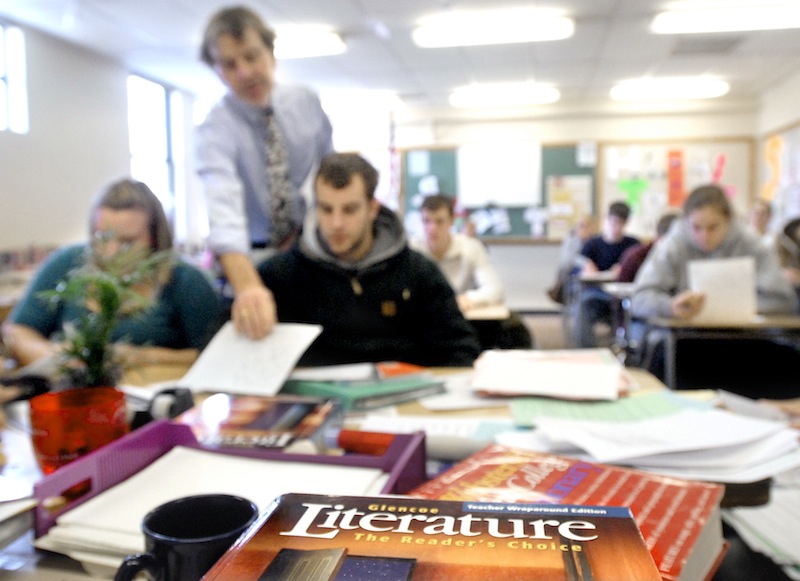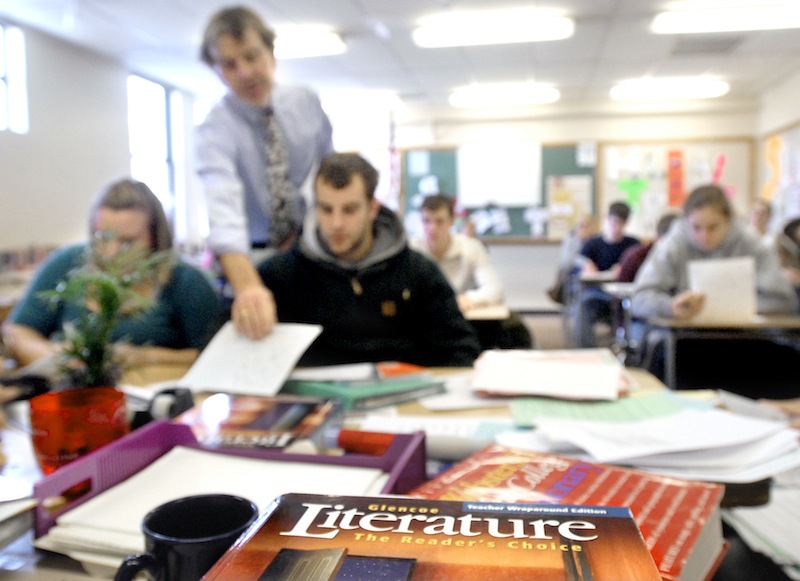A revamped SAT college entrance exam sounds good to Katherine Miller, even though she won’t get to take it.
Starting in 2016, the SAT will have no mandatory essay or penalties for wrong answers. It will include a real-life vocabulary list and a narrower focus in certain math categories. And today’s wired students will have the option of taking the test on a computer, instead of using just a No. 2 pencil.
“That sounds great,” said Miller, a junior at Portland High School who’s now taking an after-school SAT prep course that eats up six hours a week. “You need to know a lot of obscure (word) roots and, honestly, some of these words I’ve never even heard of.”
College Board officials apparently feel Miller’s pain.
“We commit today that the redesigned SAT will be more focused and useful, more clear and open than ever before,” said College Board President David Coleman as he announced the changes Wednesday at an event in Austin, Texas.
The new three-hour test, about 45 minutes shorter than the current one, will replace obscure words with ones more commonly used in college or on the job, such as “empirical” and “synthesis.”
“No longer will students use flashcards to memorize obscure words, only to forget them the minute they put their test pencils down,” read the announcement by the College Board, the nonprofit organization that administers the test and sells materials to prepare for it.
In several ways, it sounds like a return to the SAT of years past.
Scoring will return to a 1,600-point scale – last used in 2004 – with top scores of 800 on math and what will be called “evidence-based reading and writing.” With the essay, the test now has a total of 2,400 points.
Students will have the option of writing an essay, which will take 50 minutes, but it will be scored separately and will be based on a source document that students must analyze. Students now can write on any experience or opinion, with no penalty for incorrect information.
The SAT has long been criticized for not testing for reading, writing and math skills that are used commonly in high school and college. The new SAT will address that by narrowing the math test from a wide range to three core areas:
• Problem-solving data analysis, such as ratios, percentages and proportional reasoning.
• Algebra and mastery of linear equations and systems.
• “Passport to advanced math,” described as testing students’ familiarity with “more complex equations.”
Further descriptions of the redesigned test, including sample questions, will be released April 16.
In the reading and writing test, students will answer questions referring to “founding documents” such as the Declaration of Independence or the Federalist Papers, and analyze a range of sources such as literature and literary non-fiction, science, history and social studies.
In a test of critical thinking skills, students will select an answer, then be asked to select a quote from the text that best supports that answer.
The last time the SAT was changed, in 2005, the mandatory essay was added and analogy questions were removed. In 1994, antonym questions were removed and calculators were allowed for the first time.
Overall, the changes address some of the most daunting aspects of the SAT, said Rowan May, a sophomore at the Waynflete School in Portland.
His test is still a year away, but he said he’s already studying Latin roots and endings to prepare for the notoriously obscure SAT vocabulary.
“You can be a really good student and not do well,” he said.
Like Miller at Portland High, May won’t take the new test.
Maine now uses the SAT as its standardized assessment test for high school juniors, but will start using a different test in the 2014-15 school year. That test has not yet been determined.
Tracey Moore, a Deering High School guidance counselor who works with juniors, said the changes will have a big impact on students, and on schools and teachers who “pour resources” into SAT prep work.
A good score can give a student not only college admissions, but more financial aid, adding to the pressure to do well on the SAT.
“Kids know that it does have impact and, if anything, students may give it more impact than it really has,” said Moore. “But there is a reality that if a student can get a high score, they have the potential of getting into a more selective college and incurring less debt.”
Miller said, “It’s definitely stressful, and it’s such a big commitment that all leads up to this big test that feels like it leads to your whole life.”
The changes might make it easier for students to feel better prepared, she said, particularly the elimination of the essay.
The redesigned SAT will closely parallel the competing ACT, which has never penalized wrong answers, has offered an optional essay, and has asked questions more aligned with practical use of math and English. The ACT announced last year that it will start offering tests by computer in 2015.
Coleman also announced two College Board initiatives to help low-income students. Every income-eligible student who takes the SAT will receive four fee waivers to apply to college, and the College Board will partner with Khan Academy to provide free test prep materials, including practice problems from actual SAT exams and more than 200 videos showing step-by-step solutions.
Noel K. Gallagher can be contacted at 791-6387 or at:
ngallagher@pressherald.com
Send questions/comments to the editors.




